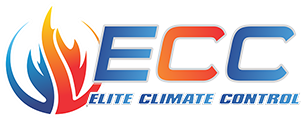Air conditioners are essential for staying comfortable during hot weather, but they do more than just chill the air. They produce water as a byproduct of the process of extracting moisture from the air to create a more comfortable environment. Unfortunately, drainage problems are frequent, and if not handled promptly, they can lead to more serious issues. This blog entry goes into the complexities of AC drainage problems, providing information on their causes, ramifications, and solutions.
Understanding the Function of Drainage in Air Conditioners
An air conditioner dehumidifies the indoor air by removing moisture and condensing it on the cold evaporator coil. The resultant water droplets gather in a drain pan before exiting the system via the drain line. This method is critical not just for humidity control, but also for minimizing water buildup in and around the unit. However, various factors can jeopardize this smooth running.
Common Drainage Problems and Their Implications
- Clogged drain lines: The most common problem in AC drainage is a clog in the drain pipe. Dust, filth, mold, and even microscopic insects can accumulate over time and restrict the flow of water. This blockage can cause water to back up and overflow, potentially harming your air conditioner or causing water damage to your home.
- Improper Installation: If the drain line is not built at an appropriate incline, water will not flow out efficiently. Similarly, if the unit is not properly leveled, it can result in insufficient drainage, causing water to pool where it shouldn’t.
- Algae and Mold Growth: Algae and mold grow in dark, wet settings, particularly within the drain line and drain pan. Not only can this cause obstructions, but it can also produce unpleasant odors and contribute to poor air quality.
- Cracked or Damaged Drain Pan: Over time, the drain pan, which is usually composed of metal or plastic, can corrode or split. This can result in water escaping from the air conditioner, potentially causing damage to the system and surrounding region.
Mitigation and Solution Strategies
Preventing and treating these difficulties necessitates a combination of routine maintenance and timely fixes.
- Regular Maintenance: Professional inspections can detect and repair issues like as clogs or poor installation before they escalate. To avoid algae and mold accumulation, homeowners should inspect and clean their drain lines on a regular basis.
- Proper Installation: Have your air conditioner and its drainage system installed by a competent technician. Correct installation avoids a variety of issues in the future, including ineffective drainage.
- Regular use of algaecides can prevent the growth of algae and mold in the drain line and drain pan, resulting in clean and odor-free drainage.
- Timely Repairs: If you see any signs of a drainage problem, such as water accumulating around the unit or an unusual rise in indoor humidity, call a specialist. Prompt intervention can help prevent more serious damage and costly repairs.
While air conditioners are crucial for comfort, their effectiveness is primarily reliant on a well functioning drainage system. Understanding potential drainage issues and their consequences is critical for homeowners and property managers. Regular maintenance, good installation, and early attention to problems are essential for guaranteeing a fully operational, efficient, and long-lasting air conditioning system. Remember that a minor trickle now can become a major issue tomorrow. Stay watchful to ensure that your comfort does not result in undesired wetness or damage.




